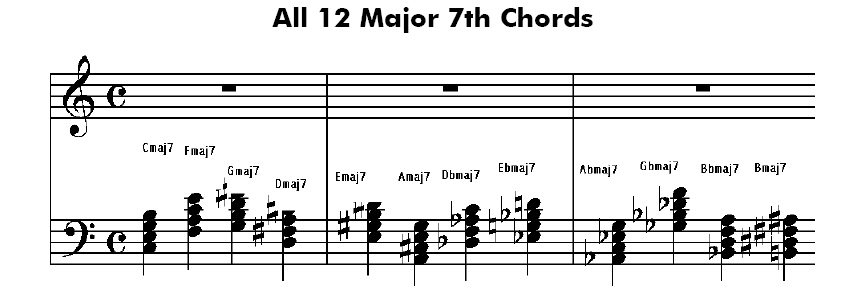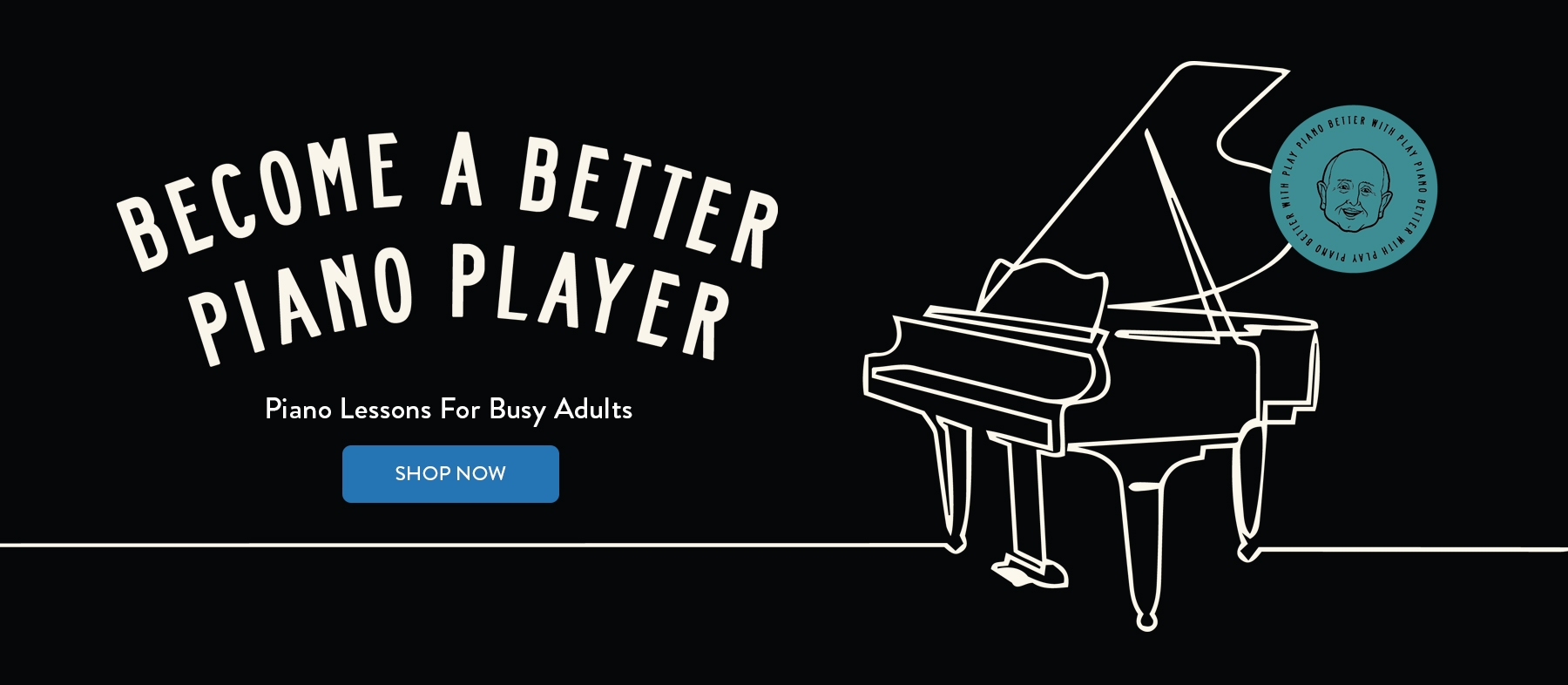Secrets of Exciting Chords & Chord Progressions: Lesson Eleven
All The Major 7th Chords
The symbol for Major 7th chords is “maj7”
Hello again, and welcome to the next edition of the newsletter. I hope you are enjoying learning about all the chords in the world — and we’re going to cover them ALL before we’re done — you’ll know more about chords than 99% of the people in the world — believe it or not, it’s true.
Some time ago we covered 7th chords. Today we’re going to learn major 7th chords — only 1/2 step different, but a HUGE difference in the sound and how they are used. 7th chords are extremely common — used in all kinds of music. Major 7th chords are less common, and are generally used as “color chords” to create a certain sound, a certain mood.
To form a major 7th chord, simply add the 7th degree of the scale to the major triad. For example, you know that the C major triad is C – E – G. You also know that the C scale has 8 notes, the 7th of which is B. So by adding B to the C major triad, we create a Cmaj7 chord:
| A Major 7th Chord = Root 3rd 5th 7th Just add the 7th note of the scale to the major triad. |
Here’s what Major 7th chords look like on the staff (remember that accidentals carry over in the same measure!):

And here’s what they look like when played with your left hand on the keyboard:

As usual, now it’s up to you. Play each maj7th chord in root position, then 1st inversion, then 2nd inversion, then in 3rd inversion (the maj7th will be the lowest note of the chord) Play each chord up and down the keyboard for at least 2 octaves — maybe 3 octaves. Play them with your left hand, then play them with your right hand. Then play them hands together.
Go through all 12 major chords, inverting every one. Then go through all the 12 minor chords, inverting each one up and down the keyboard — hands alone, then hands together. Then go through all 12 diminished chords, inverting each one up and down the keyboard — each hand alone, then together. Then play the 12 augmented chords, up and down the keyboard. Then skip around from major to minor to diminished to augmented, etc.
Then add minor 6th chords to your repertoire of chords. They are shown in root position above, but you know that you can turn them upside down ’till the cows come home — invert them — so go to it!
And then add 7th chords and their inversions….and finally, add the maj7th chords we’ve learned today.
Do you feel like you’re getting a handle on chords yet? You ought to — I know we’re going slowly, but chords are SO important that you absolutely MUST master them if you are ever going to play the piano like you hope to!
So here’s our revised chord scorecard:
| 12 major chords to 12 minor chords to 12 diminished chords to 12 augmented chords and 12 major 6th chords and 12 minor 6th chords and twelve 7th chords and twelve maj7th chords and 3 or 4 inversions of each which means you can now play over 350 chords! Way to go! |
You might consider getting the Instant Chord Finder which shows any chord instantly, including the scale of that chord.
-
 Instant Piano Chord Finder Software$29.00 – $39.00
Instant Piano Chord Finder Software$29.00 – $39.00



